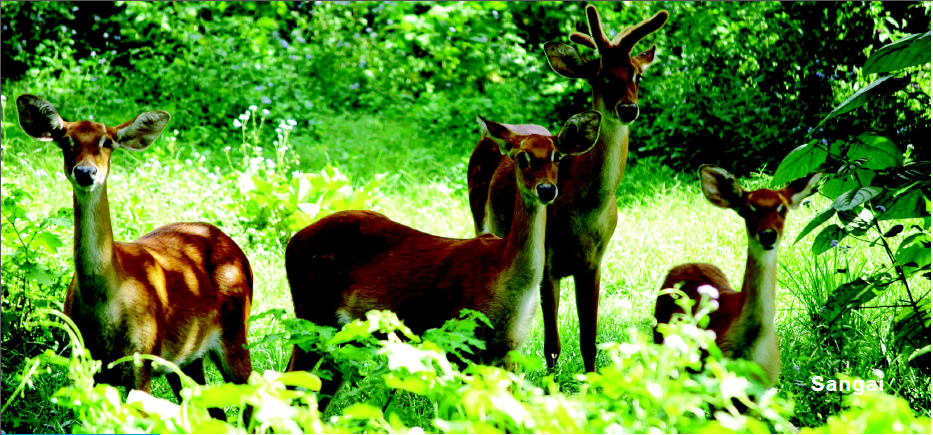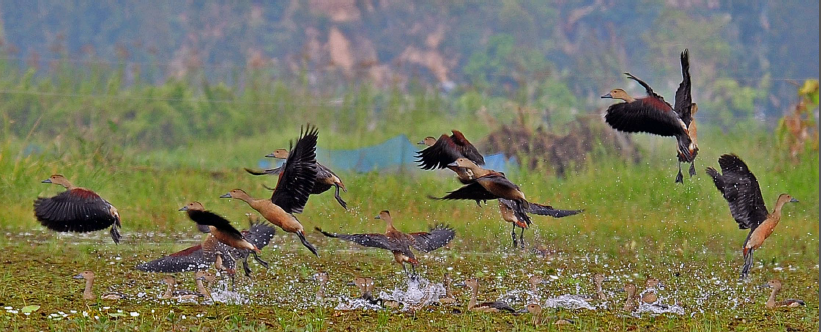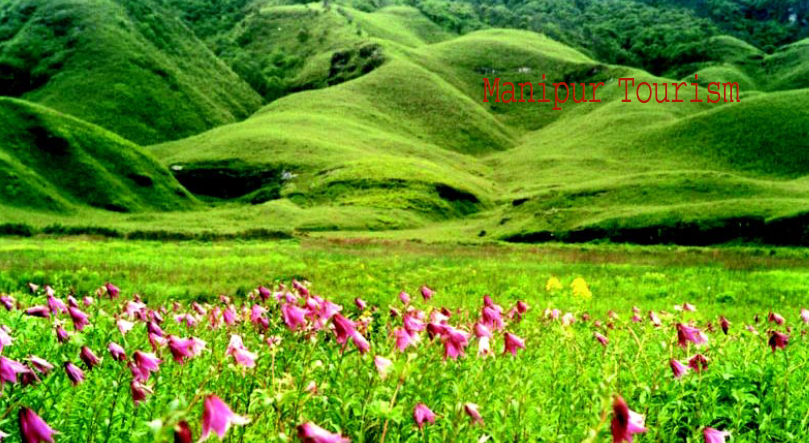Manipur: Flora & Fauna
You can update or correct this page, send photographs and/ or |
Contents[hide] |
Manipur: Flora & Fauna
Blessed with an amazing variety of flora and fauna, 67% of the geographical area of Manipur are hill tracts covered with green forests. Churachandpur and Tamenglong districts in particular have vast areas covered with bamboo forests. In a small area of about 22,000 sq. km, Manipur has alpine forests of pines, grasslands and meadows at Dzuko and Shirui, coveted the world over. Some of the most beautiful and precious blooms and orchids abound in their natural habitat spreading their beauty and colour, stunning eyes that are not used to seeing them in such profusion.
There are about 500 varieties of orchids which grow in Manipur of which 472 have been identified.
The Hoolock Gibbon, Slow Loris, Spotted Linshang, Mrs. Hume’s Barbacked pheasant, Blyths Tragopan, Hornbills, etc. form only a small part of the rich natural heritage of Manipur. Nong-in is the State bird of Manipur.
DISTRICT-WISE
Chandel District
Like other hill districts of Manipur, Chandel also has varieties of flora and fauna. Various kinds of orchids, ornamental plants and even numerous plants are abundantly grown. Some of the medicinal plants available in Chandel are given below for information.
Flora
Anisomeles indica (Thoiding Amuba: Manipuri) A strongly scented shrubby plant found in Pallel area, is used as an appetizer.
Anotis foetida (Khut-chappi: Manipuri) A small herb found in Sugnu and Pallel areas, its smashed roots are applied to fractured bone which acts as a poultice of plaster of Paris for setting and healing. The same is applied to boils.
Areca catechu (Supari: Manipuri) A slender tall palm, cultivated in Moreh area. Paste of the nut after rubbing on the stone with water is applied to leucodermal patches.
Brucea javanica (Heining: Manipuri) A small deciduous tree found in Pallel, its fruits are used for diarrhoea, dysentery and malignant malaria. Poultice of leaves is applied in skin troubles. Roots are used in bowel complaints.
Crasscephalum crepidiodes (Terapaibi: Manipuri) A herb found in Moreh area, whose lotion of leaves is used as a mild stomachic.
Fauna
The only ape found in India , the Hoolok Gibbon l ocally known as Yongmu, is also found in Chandel district. Similarly, the Slow Loris, the Stumped Tailed Macaque, the Pig Tailed Macaque are the other rare primates that occur in the forests. Sometimes rare nocturnal carnivores, the Clouded leopard and the Golden Cat are also sighted. The gigantic land animal, the elephant, makes seasonal migration into the Indo-Myanmar border areas.
The Himalayan Black Bear is also found in Chandel. The rare and elusive Malayan Sun Bear is restricted to the Unique forests in the Indo-Myanmar border areas. Herds of Bison, as well as of Sambhar, can be seen during night in New Samtal area. Thai Pangolins can also sighted in the Indo-Myanmar border areas which falls under Chandel.
Birds like Pheasant, Burmese peafowl and jungle fowls are also sighted in Chandel.
Wildlife Sanctuary
The Yangoupokpi-Lokchao Wildlife Sanctuary, a protected area network in Manipur, is situated on the Indo-Myanmar border of Chandel. The sanctuary is the home of about 86 species of fishes, 6 species of amphibians, 29 species of mammalians.
Churachandpur
CHURACHANDPUR FOREST DIVISsION, CHURACHYANDPUR
GENERAL DESCRIPTION OF THE AREA AND ITS PEOPLE:
The majority of the villagers were Scheduled Tribes and mostly depends on daily Labour and marginal jhuming for their livlihood.
STATUS OF THE FOREST AREA:
1. Unclassed/ Community forest Land 45.366 Ha.
2. Reserved Forest ( Cheklaphai RF) 8.560 Ha
Total 53.926 Ha.
The vegetation is dominated mostly by herbs, shrubs and young recruits and of plantations by private individuals/villagers. Trees of timber size are not avauilable in the area.
FOREST AND WILDLIFE
Flora
The Flora of the area comprises
Castenopsis Spp,
Emblica officinalis,
Quercus Serrata,
Schima wallichi,
Ground flora incdudes
Clerodendron,
Lantana,
Fauna
The fauna available are
Barking deer,
Jungle cat,
Fox,
Slow loris,
Jungle fowl
No rare and endangered species of flora and fauna found in the area.
PROTECTED AREAS:
No National Park, Biosphere Reserve, Tiger Reserve, wild life Sanctuary and protected archaeological or heritage sites in the area.
Wildlife parks and sanctuaries: India
KEIBUL LAMJAO NATIONAL PARK
Situated 32 kms from Imphal, the capital of Manipur, Keibul Lamjao is the unique habitat for one of the most endangered deer in the world - the "Sangai". Keibul Lamjao is a part of a wide valley with a number of hillocks surrounded by lakes. Loktak lake the largest freshwater lake in India covering 6475 ha. is designated as a Ramsar site. Loktak lake offers a vast diversity of avifauna. Keibul Lamjao is situated in the southeastern part of the Loktak lake.
Sangai live on floating mass of decaying aquatic vegetation and are active at dusk and dawn. Besides the endangered Sangai, one gets an opportunity to watch birds also. International visitors are required to obtain special permission to enter into the national park.
Location
Location: 32 kms from Imphal
Access: 40 sq. kms.
Best time to visit: December to May
Access
By Air - Imphal (32 km)
By Rail - Dimapur (229 km)
Accommodation
Government Rest House and Tourist Lodge
Contact
A.C.F. Keibul Lamjao National Park Manipur




